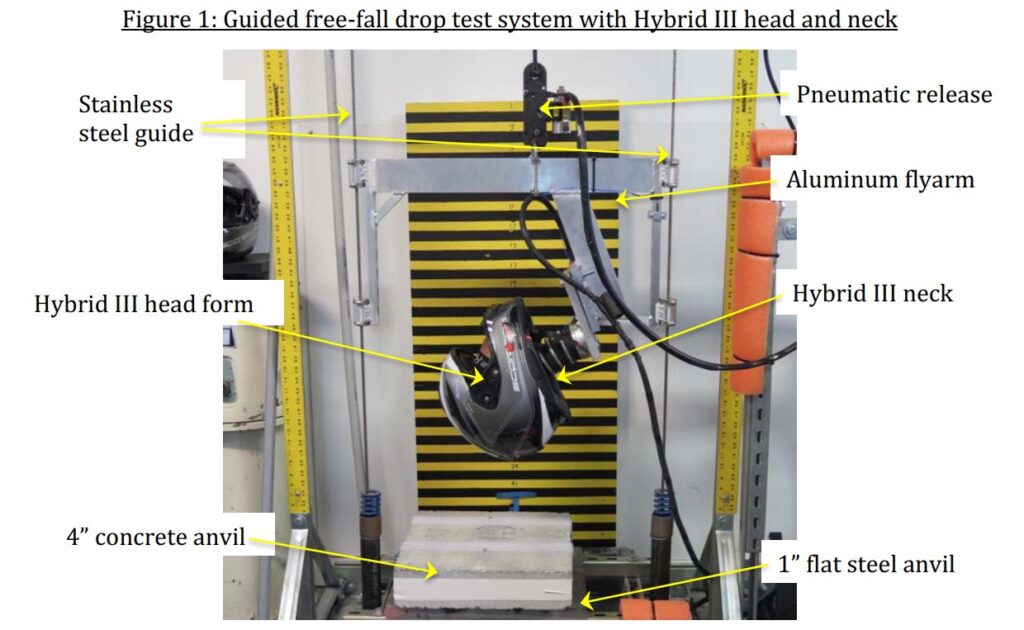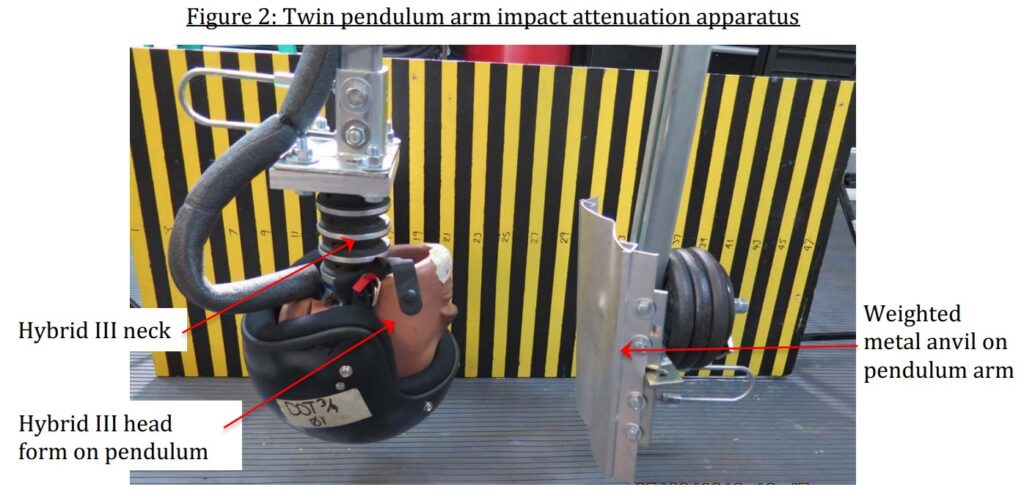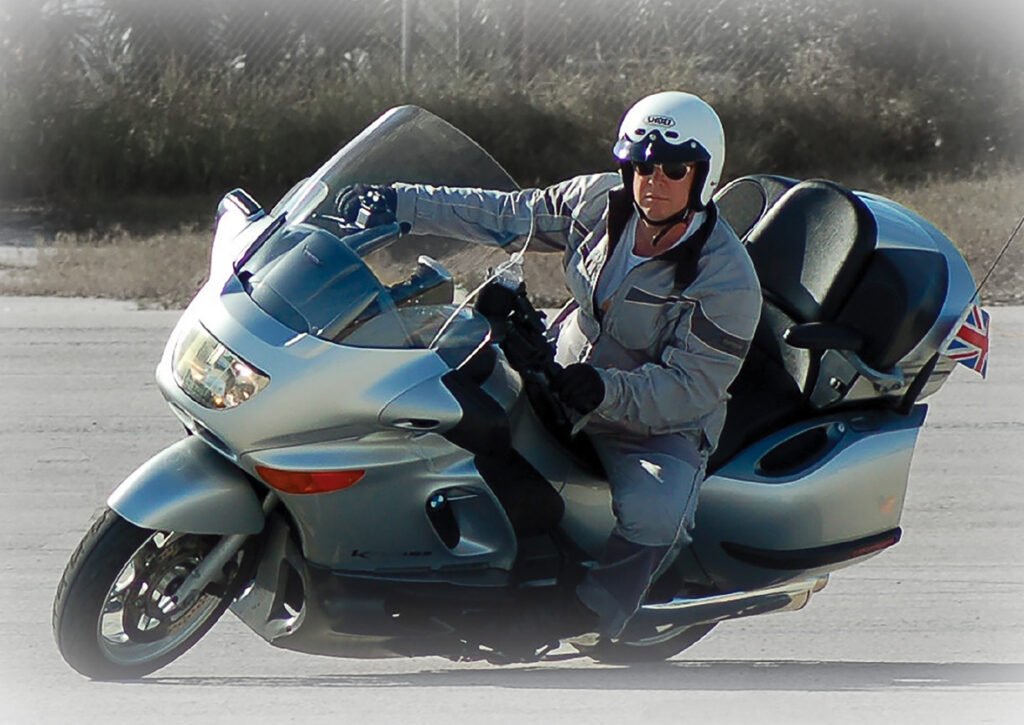A helmet is an integral component of protective gear for a motorcyclist. The significance of this component cannot be overstated. Nonetheless, many riders persist in neglecting it. Common head and brain injuries in road accidents underscore the necessity for a conscientious approach to selecting a helmet and the mandatory wearing of it. We spoke with Dr. Lloyd about his crucial work in the field of motorcycle safety. Dr. Lloyd discussed numerous critically important aspects of motorcyclist head injuries, elucidated his research methodology, and addressed several other intriguing topics. If you want to learn about the best helmet for a motorcyclist, you’re fortunate to read this interview.


Dr. Lloyd earned a PhD in ergonomics / human factors, with a specialization in biomechanics from Loughborough University, England and is Board Certified. Additionally, he attained Accreditation as a Traffic Accident Reconstructionist and has completed many certification courses specific to motorcycle accident investigation, analysis and reconstruction, as well as driver human factors.
His academic career was served at the VA Research Center of Excellence in Tampa, Florida as Director of the Biomechanics and Traumatic Brain Injury Research laboratories, where his research focused on the biomechanics of head and brain injuries. He conducted many interesting studies while working at the VA, including investigating changes in the electrical activity (EEG) of American Football player brains in response to head impacts. To date his professional work has been published in six book chapters and 33 articles in peer-reviewed scientific and medical journals, as well as presented at more than 100 national and international conferences.
Dr. Lloyd has been riding motorcycles for approximately 40 years, during which time he has owned a variety of motorcycles and completed numerous advanced riding courses. He retired from the VA in 2016 and now investigates motorcycle accidents to determine how and why the accidents occurred. This includes studying the motorcycles to determine if something went wrong mechanically, or due to a design defect, as well as looking at the actions of the driver and rider to determine if their responses contributed to the collision. He also examines the injuries to determine if the helmets performed properly.
Given his combined expertise and experience, Dr. Lloyd has been admitted by courts across the United States and internationally to present testimony regarding motorcycle accident reconstruction, motorcycle inspection and testing, motorcycle handling and operation, rider human factors and injury biomechanics.

Roll On: Dr. Lloyd, your recent meta-analysis examined 328 motorcycle helmet durability tests. Can you explain to viewers why this research is crucial, especially considering the rapid pace of technological advancements? We know technology is always evolving, but some challenges persist, like preventing brain injuries in motorcycle accidents. How common are head injuries in motorcyclists compared to other injuries?
Dr. Lloyd: The head is the most likely to sustain a serious injury as a result of a motorcycle collision because when a motorcyclist is ejected, they tend to lead with their head. Thus, if their path intersects with another vehicle, they may collide headfirst with that vehicle, or if they are ejected from their motorcycle, the head is often the part of the body that makes contact with the ground or another fixed object, such as a tree or barrier. While other injuries like broken legs, arms, or ribs are also common, protecting the head is particularly important because, in terms of functionality, the brain inside the head serves as the body’s «computer.» It’s crucial to protect this «computer» because damage to it can lead to various other problems, potentially including fatal injuries.
The research I have been conducting goes beyond current motorcycle helmet standards evaluations. Although there has been some recent progress in the development or revision of these standards, including the new ECE 22.06 standard for use in Europe, the FIM standard governed by the International Motorcycle Federation for competition use, and the upcoming 2025 revision of the voluntary Snell standard in the United States, all of which are now beginning to address brain injury risk, which is very encouraging.
Over the past ten years, my research in this field, particularly focusing on motorcycle helmets, has involved a comprehensive evaluation not only of the risk of head injuries but also of the risk of brain injuries. The main finding is that standard motorcycle helmets (certified helmets intended for use as true motorcycle helmets) offer no protection against these brain injuries. In fact, these helmets can potentially increase the risk of rotational brain injuries due to the fact that the helmets are bigger and heavier than the head alone.

Roll On: What kind of helmets and How exactly have you tested them?
Dr. Lloyd: So far, I have tested a selection of 30 different helmet models. For each of these 30 helmet models, I have purchased several samples (five or more) for independent testing. The helmets include full-face or full-coverage helmets, open-face helmets (sometimes referred to as jet helmets or three-quarter helmets), and half-shell or shorty helmets. Additionally, I have tested five different models of novelty or non-certified helmets. Although these are not commonly used in other regions of the world, they are somewhat common among «rebel riders» in the United States — individuals who wear helmets that do not meet testing standards.
I have compared these 30 different helmet models against impacts on an unhelmeted head. I have conducted a total of 70 unhelmeted head impacts across various regions, including impacts to the front and back of the head, as well as different impact speeds. This serves as a baseline to measure the risk of head and brain injury in an unhelmeted or unprotected condition.
The helmets were then tested using three different test apparatuses. Firstly, a guided twin-wire drop system, which is commonly used in motorcycle helmet standards and other sports applications. This system involves twin wires guiding the helmet as it falls from a height of two to three meters onto a steel anvil or concrete base, resulting in an impact speed of between six and seven and a half meters per second (13 to 18 miles per hour).
Secondly, an inverted pendulum apparatus, where the pendulum falls through 90 degrees with the helmet on a head and neck at the end. This generates a higher impact speed due to the arc of the fall, allowing for testing at speeds of up to 20 miles per hour (8.5 meters per second).
Lastly, a twin pendulum apparatus, where two pendulums collide in the middle, generating an impact speed of 17 meters per second (about 40 miles per hour). This apparatus allows for testing at very high impact speeds.
During testing, a crash test dummy head with a hybrid three-head form and a hybrid 3 neck is utilized. This allows for movement of the head on the neck, and the head contains five different sensors that measure linear and angular motion in response to the impact.
Roll On: Can you conclude from your research that there are helmets that really do a better job than all the others?
Dr. Lloyd: We need to understand that there are two different mechanisms that cause injury: translational forces and tangential forces. Translational forces are those that cause an object to move in a specific direction. For example, if I apply force to my phone, it moves in a linear direction. If the impact is oblique, it generates a tangential force, causing rotation.
These linear forces responsible for translation cause focal head and brain injuries, such as bruises, lacerations, skull fractures, and brain contusions. Rotational forces, on the other hand, cause concussions, nerve damage, and brain bleeding.
Helmets have been traditionally designed to prevent penetrating injuries to the head, similar to their historical military purposes. This design is crucial because when traveling at high speeds, there is a risk of hitting something that could penetrate the skull and cause brain damage.
However, until recently, helmets have not addressed the risk of rotational brain injuries. Epidemiological research has shown that two-thirds of all helmeted motorcycle head injury cases involve rotational brain injury, often resulting in fatalities.
While helmets have effectively reduced focal head injuries, they have become oversized and heavy, leading to rotational inertia. This inertia causes the brain to continue moving even after the head stops, resulting in nerve and blood vessel damage.
Based on my research, smaller, lighter helmets would be more effective at reducing rotational brain injuries while still providing excellent protection against focal brain injuries. Over-engineered helmets, although effective in reducing focal injuries, have become too heavy and large, exacerbating rotational injury risks.

Roll On: New materials and enhanced vision features are emerging trends in helmet development. What are your thoughts on these advancements? Do you believe they will significantly reduce the risk of head injuries for riders?
Dr. Lloyd: The standard liner in a motorcycle helmet is typically made from expanded polystyrene, a lightweight and inexpensive material that has been used for over 60 years. While this material effectively reduces focal injuries, it does little to prevent rotational brain injuries. In fact, due to its larger and heavier design, it may even exacerbate rotational brain injuries.
Fortunately, there are new materials and methods being developed to allow the helmet to move independently of the head, thereby reducing rotational forces. In Europe, technologies like the Multi-Directional Impact Protection System (MIPS) have shown promise in addressing these rotational forces. Similarly, in the United States, the Omni-Directional Protection System has been developed to better separate the helmet shell from the rider’s head, allowing for independent movement.
In my opinion, technologies incorporated into helmets should prioritize head and brain injury protection. While features like Bluetooth and sunshades may offer convenience to the rider, they add unnecessary size and weight to the helmet without directly contributing to rider safety. Riders who desire such features can choose to use external accessories rather than integrating them into the helmet, as additional weight and bulk increase the risk of brain injury.
Roll On: Dr. Lloyd, in your perspective, what will the ideal motorcycle helmet of the future look like?
Dr. Lloyd: I believe that helmets need to be smaller. My research has not only focused on motorcycle helmets but has also examined helmets used in various other activities. I have studied helmets for American football, skiing, bicycling, ice hockey, mountain climbing, and military applications, among others. Overall, I have conducted over two and a half thousand impact tests.
With this extensive research, I have observed a trend: smaller, lighter helmets provide excellent protection against focal injuries caused by translational forces. Even though the impact speeds for these tests were lower than those for motorcycle helmets, smaller and lighter helmets still offered excellent protection. Additionally, due to their reduced size and weight, they also mitigate the risk of rotational brain injury.
From what I have observed, the best helmet for motorcycling may not necessarily be a traditional motorcycle helmet. I have seen excellent performance from helmets designed for bicycling and mountain biking. For instance, bicycle helmets are designed to protect riders traveling at speeds of up to 40 miles per hour, and they offer both protection and ventilation.
There are differences in standards between bicycle helmets and motorcycle helmets. Bicycle helmets have spacing between the ribs for ventilation, whereas motorcycle helmets must have a complete shell to prevent penetrating injuries from any direction. This allows bicycle helmets to be much lighter.
Based on my research, I believe we may be able to move towards helmet designs similar to those used for bicycling. These helmets could provide both excellent protection and ventilation, catering to different climatic conditions worldwide. For example, riders in Africa or Central America may prioritize ventilation to combat heat, while those in the United Kingdom may prefer helmets that help retain warmth.
In conclusion, I envision the future of helmets to be smaller and lighter, offering improved comfort by reducing drag and neck strain. These smaller, lighter helmets will not only serve protective purposes effectively but will also enhance overall comfort for the wearer.

Roll On: While helmets play a vital role, do you believe other factors besides helmet quality contribute to the prevalence of rider brain injuries? Maybe it’s the rider’s overconfidence? Is it a lack of skill that leads to serious injuries?
Dr. Lloyd: Obviously, serious injuries often result from collisions or crashes. Collisions typically involve another vehicle on the road, while solo motorcycle crashes occur when there is no other vehicle involved. The leading cause of fatal injuries in motorcyclists is running wide in a corner, as riders may collide with fixed objects like trees or barriers. To mitigate the risks of such collisions and crashes, several measures can be taken.
Firstly, improving our abilities as motorcycle riders through advanced training is crucial. Research has shown that certain key factors contribute to these types of collisions and resulting injuries, including lack of training or advanced training. Therefore, investing in comprehensive training programs is essential.
Another aspect to consider is helmet use. In some states in the United States, helmet use is voluntary for riders. However, wearing a helmet significantly reduces the risk of head injuries in crashes.
Additionally, alcohol or other forms of impairment, as well as speeding, are significant factors in motorcycle crashes. Therefore, promoting responsible riding behaviors and adherence to speed limits is imperative.
I understand that in some countries, training requirements for motorcyclists are more stringent. In the United States, initial training may be minimal, often consisting of a weekend-long class where riders practice on small motorcycles at low speeds in parking lots. However, this training may not adequately prepare riders for high-speed situations, such as riding on highways. Therefore, ongoing training and advanced courses are essential for improving riding skills and safety.
Obtaining a motorcycle license is just the first step in learning how to ride safely. It is crucial for motorcyclists to seek additional training, continuously practice, and strive to improve their skills to ensure their safety on the road.
Roll On: Dr. Lloyd, what are your plans in the scientific field? What will you focus on?
Dr. Lloyd: Well, I’ve just finished a scientific paper on traumatic head and brain injuries associated with motorcycle helmets, and I’m in the process of getting it published. I am also currently working on a new article that will analyze helmets across various domains to determine which helmets provide the best protection against both focal and rotational injuries. My hope is to engage with different standards organizations and help guide their standards. For example, my paper on motorcycle helmets has identified a significant methodological deficiency in the current standards used to evaluate the risk of brain injury. Specifically, these standards involve a free-fall head drop test, where the head, detached from any apparatus, falls and impacts an anvil representing a roadway. However, because the head is not attached to anything, it experiences unrestricted motion and lacks any induced effect, such as rebound. I’ve termed this induced effect as the rebound, where the head impact causes a rebound, restricted by the motion of the neck. This resistance results in much higher induced angular velocities and accelerations, which are not currently measured in the tests used by various standard organizations. Therefore, I would like to engage with these standard organizations and share my research with them to propose improvements to these tests.










